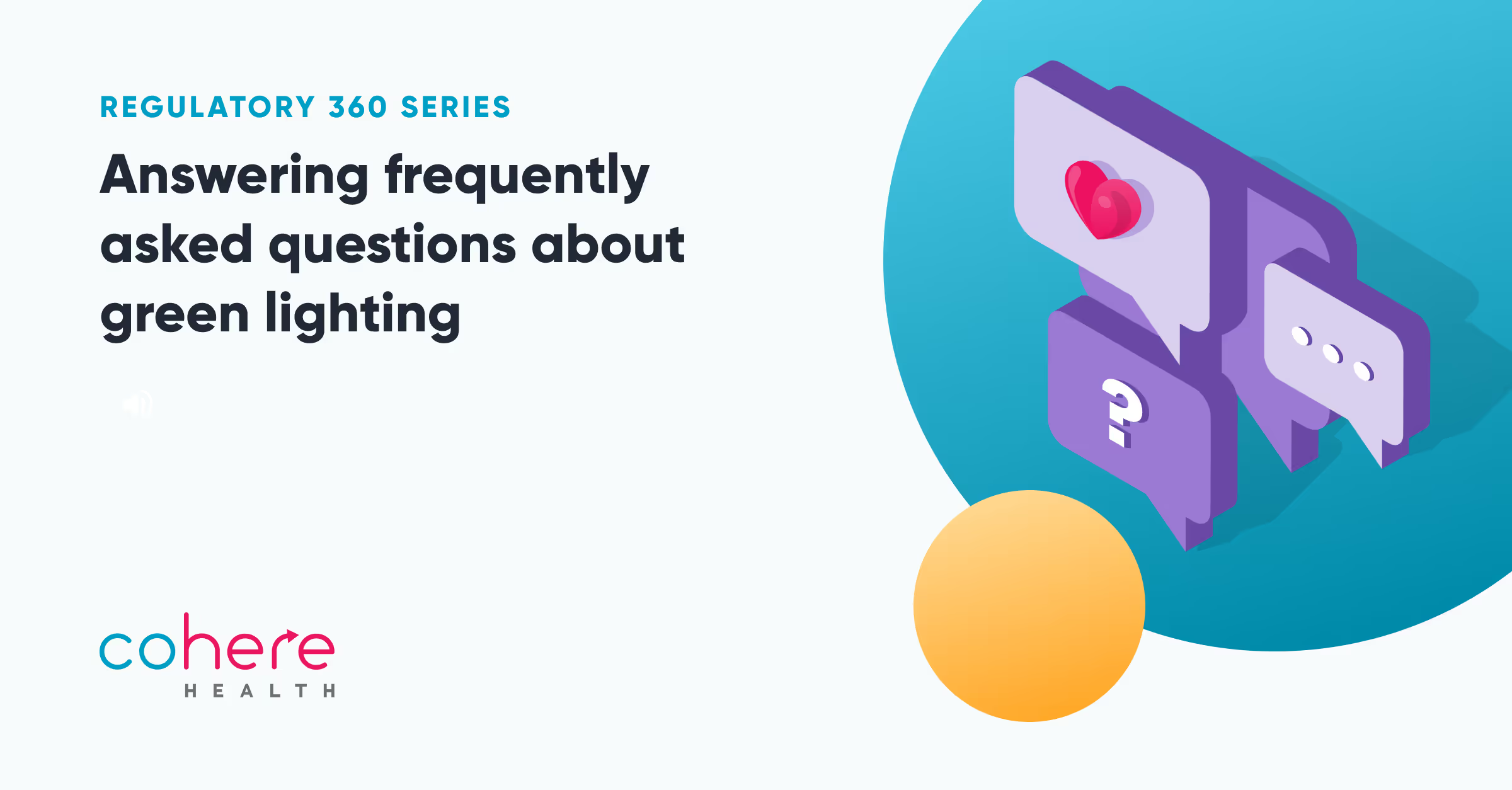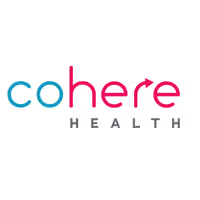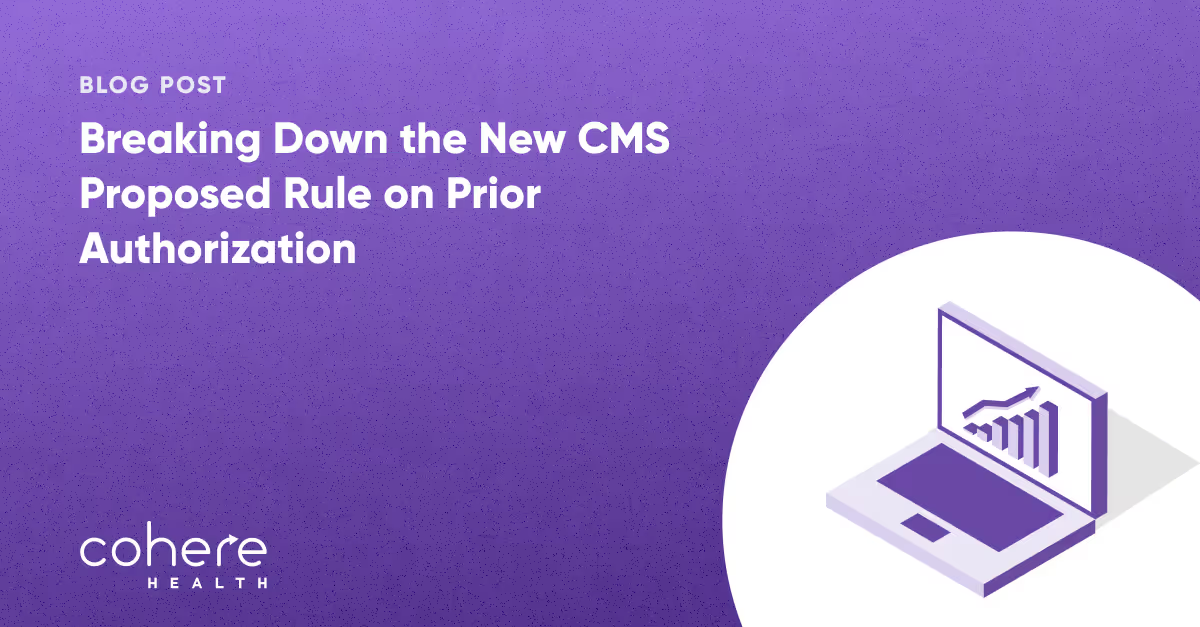Answering Frequently Asked Questions About Green Lighting
Published:
May 17, 2023

How green lighting solves the limitations of gold carding
Green lighting is an alternative to prior authorization gold carding that intelligently evaluates ongoing and real-time provider prior authorization data against benchmarks to reward high-value providers with fast approvals and minimal data submission. This approach reduces provider and health plan burden, while encouraging greater payer-provider collaboration to improve care access and quality. Compliant with gold carding regulations, green lighting is a more targeted and flexible alternative because it is driven by real-time analytics.
Gold carding: A regulatory approach to reducing the prior authorization burden for physicians
West Virginia was the first state to adopt a gold carding program, which allowed providers with a 100% approval rating for a service to skip prior authorization for that service. Two years later, Texas made headlines for passing a more lenient gold carding program, requiring only a 90% approval rating for exemption from the prior authorization process. Michigan passed a statute for commercial insurance servicers that will be fully in effect as of June 1, 2023. Louisiana has also passed gold carding legislation.
At least eight other states have introduced gold carding bills, including Indiana, Kentucky, Mississippi, Nebraska, New York, Colorado, and Missouri. The programs are designed to reduce the administrative burden of prior authorization, which according to an American Medical Association (AMA) survey, 88% of physicians describe as high or extremely high.
However, for states that have implemented gold carding programs, particularly Texas, the path to gold carding implementation has been rocky. One Texas oncologist shared her experience with AMA, stating, “Payers were supposed to distribute to doctors’ guidelines about what they were gold carded for,” and that it hadn’t yet happened.
AHIP conducted an industry-wide study on prior authorization reform and found mixed reviews on impact and outcome in response to increased use of gold carding. With two desired outcomes for gold carding programs (reducing administrative burden and improving provider satisfaction) falling below 50%, 33% of respondents cited that it was administratively difficult to implement. The survey also asked why insurers discontinued gold carding programs. The top answers included:
- 75% of respondents cited that it was administratively difficult to implement
- 50% of respondents stated that it reduced quality and/or patient safety
- 25% of respondents answered that it increased costs without improving quality
With so many administrative hurdles to surmount, intelligent prior authorizations are offering an alternative path to compliance with gold carding regulations, called green lighting.
Green lighting: A data-driven alternative to reduce burden and enhance care quality
Green lighting leverages real-time data-driven intelligence combined with industry and peer benchmarking and evidence-based guidelines to isolate providers with high-volume and outlier performance (percent approval and denial) for specific service requests.
Here are three key advantages of green lighting vs gold carding:
- Reduces administrative burden by leveraging data and analytics instead of manual methods
- Drives higher quality patient outcomes by using real-time administrative data
- Promotes greater health equity by leveraging prior authorization transactions as an opportunity for greater payer-provider collaboration
Green lighting is powered by a strong data and analytics program compliant with federal regulatory guidelines on interoperability and transparency. Prior authorization data can be isolated at the practice or physician level for the necessary combination of services, and can green light an entire group of providers, such as if they are risk-bearing.
This is essential because the eligibility and scope of gold carding programs vary greatly. The Texas and Michigan laws, for example, do not affect all health plans or lines of business, requiring plans to segment data for their member populations, their providers, and service categories. Because legacy systems lack the technological infrastructure to collect this data, health plans will face substantial costs and complexities to implement.

Green lighting uses ongoing and real-time provider evaluations instead of the manual “moment in time” annual or semi-annual performance reviews used by most plans. Green lighting expedites the process, but does not exempt providers from submitting clinical data. Therefore, green lighting criteria can be adjusted as needed if the utilization is inappropriately increasing.
This is especially beneficial for health plans grappling with the ethics of basing gold carding eligibility on performance records while provider “gaming” of clinical questionnaires is still a concern. According to a report by the American Heart Association (AHA), it can also be challenging to differentiate clinicians who attempt to practice according to guidelines but need assistance, from those who may dishonestly provide services. Because Cohere’s green lighting approach builds on its capabilities as an intelligent prior authorization solution, it considers a provider’s longitudinal impact on the patient’s care journey, evaluating the service request within a more comprehensive assessment of the provider’s quality and value of care.
Green lighting can be used to improve approval rates and care quality. Quarterly provider scorecards allow health plans to proactively and transparently communicate performance metrics, including peer comparison, to help drive performance and long-term behavior changes with their provider partners. Gold carding could potentially exacerbate existing inequities because larger integrated health systems often have more time and resources to dedicate to approvals and appeals. Additionally some Medicaid and lower-cost managed care plans may have lower prior authorization approval rates. With green lighting, health plans can use below-average physician performance data to address gaps in documentation or clinical education, leveraging prior authorization transactions as an opportunity to collaborate with physician partners on improving care quality for their patients.
Green lighting reduces physician and health plan burden, and helps health plans and providers collaborate to improve care quality.
Download our white paper, The Tech-Powered Shift from Transactional to Transformational Prior Authorization, to learn more about our intelligent prior authorization.
Available For Download
Stay ahead with expert insights on transforming utilization management and payment integrity—delivered straight to your inbox.


